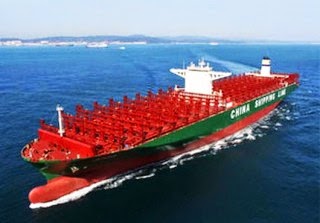The use of increasingly large vessels on deepsea trade lanes will mean that carriers will have less flexibility to adjust capacity by blanking sailings, according to new analysis by SeaIntel.
A study of blankings over the past 108 weeks on the Asia-northern Europe trade lanes identified 95 suspended sailings, meaning that roughly one departure a week is skipped, not including the Chinese New Year and Golden Week celebrations.
Of the 95 missed sailings, carriers chose to blank large vessels in just 16% of the cases, while in 84% it was a small vessel that was replaced by a blank sailing.
“It is our belief that when the carriers choose to blank sailings, they blank capacity of similar size to the shortfall they expect to have that week,” SeaIntel states.
However, the analyst did find large differences between the carrier groupings when choosing whether to blank large or small vessels when studying data from January 2013 to early April 2015.
This covered the period early this year when new alliances, such as the 2M alliance between Maersk and Mediterranean Shipping Co, started up. Maersk Line, 2M and CKYHE did not blank any of their large vessels, SeaIntel found.
However, G6 members have done so in 33% of the cases where they needed to blank sailings. Partners China Shipping and United Arab Shipping Co did so on 63% occasions.
The report points out that latter pair operate only two services between Asia and north Europe, but when they decided to blank a sailing, they mostly chose the larger of the vessels, thus dropping more than half of their weekly capacity.
Both carriers have, however, had a substantial number of slot charter agreements with lines from the other alliances. It is therefore possible that they have been able to divert a large share of their cargo to these slot charter services, allowing them to blank their largest vessels.
Analysis of the blanking data shows that carriers often choose to blank capacity equal to the small vessels in the weeks where demand does not match capacity.
“This is good news for the carriers,” SeaIntel says. “It means that even though it is never a good sign that they need to blank sailings, the gap between supply and demand is rarely so large that it justifies blanking of the largest vessels.”
However, with many orders for ever larger vessels and the assumption that these ultra large container vessels will be phased into Asia-North Europe, the number of services is expected to decrease over the coming years as these new and larger vessels are delivered.
This will mean the carriers will have less flexibility to adjust capacity by blanking sailings. Fewer services with larger vessels mean that if a sailing is blanked, a larger percentage of the carrier grouping’s weekly capacity will be lost and more of the carriers’ customers will be affected.




Comments
Post a Comment